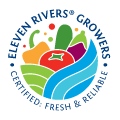Seven tips for an environmental monitoring program

If you are planning on renewing your environmental monitoring program, you probably have a to-do list. And this list probably includes the identification of the new FSMA requirements. You may also include the answers to your questions about sanitary design, personnel practices, and operational methods. AIB International’s microbiologist, Dr. Kantha Channaiah, shared with us some tips which may be useful:
1. Why do we need an environmental monitoring program?
Data clearly shows that a substantial amount of foodborne illness outbreaks is due to poor hygiene practices. In addition, recontamination remains a concern. Therefore, it is critical to continuously maintain and continuously the hygiene environment in food processing facilities, to ensure the production of food safe, secure, and high-quality food. To achieve a high-quality hygiene standard, an environmental monitoring program is essential. It will measure the overall effectiveness of sanitary design, personnel practices, and operational methods.
2. What does the FDA say?
According to the FDA’s Food Safety Modernization Act (FSMA), a facility that produces food and maintains preventive controls must perform an environmental monitoring and product testing if:
- A ready-to-eat food product (“TEN”) is exposed to the environment before packaging.
- Packaged food does not receive a treatment that significantly minimizes an environmental pathogen
3. What is zone 1?
Zone 1 is the most sensitive to contamination, and includes all surfaces in direct contact with food in the facility. E.g., blenders, conveyors, utensils, work tables, etc.
4. What is the best time to collect swab samples?
The recommendation is to collect swab samples several hours after production or preferably just before cleaning. It is also recommended that smear samples are not taken too close to the time when surfaces were disinfected.
5. What is the minimum number of swab samples that should be collected in each sample?
Depends on the evaluation of microbial risks. The environmental monitoring team must determine the adequate number of surfaces in contact with food and the sampling sites with no contact with food based on the facility size, facility features, product flow, food features, processing methods used to produce the food, and prior sampling results (if available). It is recommended that even the smallest food processors collect samples from at least 5 sites in contact with food and 5 sites with no contact with food in each production line of ready-to-eat (RTE) food.
6. Can I use an environmental monitoring program to validate cleaning and disinfection methods?
The environmental monitoring program is more focused on validating the frequency of cleaning and disinfection and all programs of good manufacturing practices.
7. Can I use the results of finished product tests as a single means to control microbiological hazards?
According to FSMA, product testing and testing with environmental swabs are considered a verification activity. The finished product test as a single means to control microbiological hazards is not a good strategy.
If you have any questions about the environmental monitoring program in your facility, please contact us and request an AIB International expert to visit your food facility.
Source: https://www.aibonline.org/


